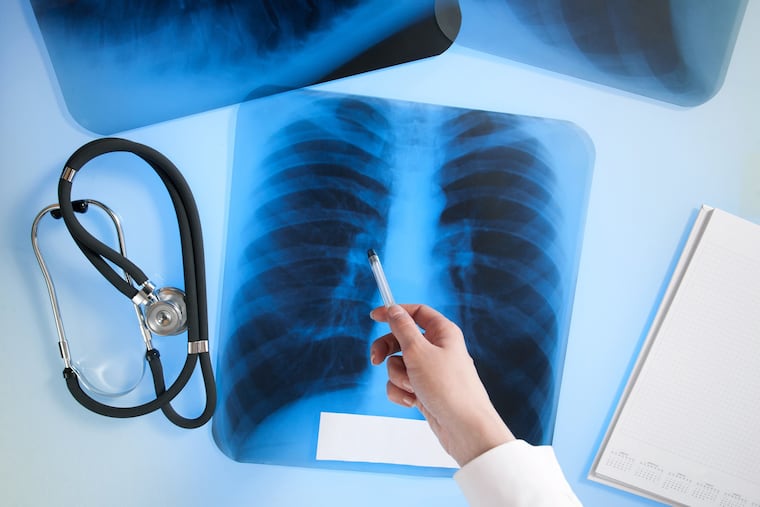Q&A: What are the best options for treating lung cancer?
A multidisciplinary cancer care team helps the patient develop a plan based on factors such as age, lung function, smoking history.

Second of two parts.
Despite years of declining cigarette smoking, lung cancer remains the leading cause of cancer death in the U.S. While smoking presents the biggest risk for developing lung cancer, 10% to 20% of lung cancer cases in the U.S., or 20,000 to 40,000 cases each year, occur in people who never smoked or smoked fewer than 100 cigarettes in their lifetime.
Symptoms of lung cancer are the same, whether or not you have ever smoked. Last time, we looked at the types and stages of lung cancer and survival rates. Today we focus on treatment.
What treatment options are available for early-stage non-small cell lung cancer?
Based on the age of the patient, general health, associated medical conditions and overall lung function, treatment options for NSCLC, which comprises up to 85% of lung cancer cases, vary. They include:
Surgery.
Radiation therapy (RT).
Radiofrequency ablation (RFA).
Targeted therapy medications.
Observation.
Surgery is the most common treatment for lung cancer. Surgery options include:
Removal of a piece of the lung tissue around the tumor (wedge resection, sleeve resection or segmentectomy).
Removal of the entire lung lobe that contains the tumor (lobectomy).
Removal of the whole lung (pneumonectomy).
Minimally invasive procedures such as robotic- or video-assisted thoracic surgery have shown improved patient outcomes, such as decreased pain, reduced hospital stay, quick return to work, and fewer overall complications, without compromise in treatment effectiveness.
If a patient cannot or does not wish to undergo surgery, radiation therapy may be performed either using standard conventional doses or by stereotactic body radiation therapy.
All modern radiation therapy techniques are aimed to deliver radiation safely with maximum tumor control and minimal side effects.
How do you determine which treatment is right for you?
A multidisciplinary cancer care team helps the patient develop a plan based on factors such as age, pulmonary function, smoking history, and any other underlying medical conditions. This team typically includes a pulmonologist, a thoracic surgeon, radiation and medical oncologists, and a pathologist.
How long does it typically take to complete treatment?
Recovery from lung cancer surgery varies, based on the extensiveness of tissue removed. Typically, patients are back to their normal routines in one to two weeks following minimally invasive surgery, while recovery can take up to a few weeks to months after more extensive surgery.
Conventional radiation therapy schedules vary, typically with four to six weeks of daily treatments, performed Monday through Friday.
Stereotactic body radiation therapy is performed in three to five outpatient treatment sessions, daily or alternate days within two weeks. Patients are not required to stay at the hospital, they do not need to take a break from work, and they experience fewer side effects and compromise in lung function.
What tests are needed for surveillance after treatment is over, and how are the patients followed?
After primary surgery or radiation therapy is complete, patients are seen by their multidisciplinary care team to monitor for side effects and ensure that there is no evidence of cancer.
Initial follow-up care involving a CT scan and physician visits occurs every three months in the first two years after primary treatment. A CT scan of the chest is done once every six months for years three and four, and then annual CT scans at five years and beyond.
Aruna Turaka, is a radiation oncologist at Nazareth Hospital in Philadelphia.